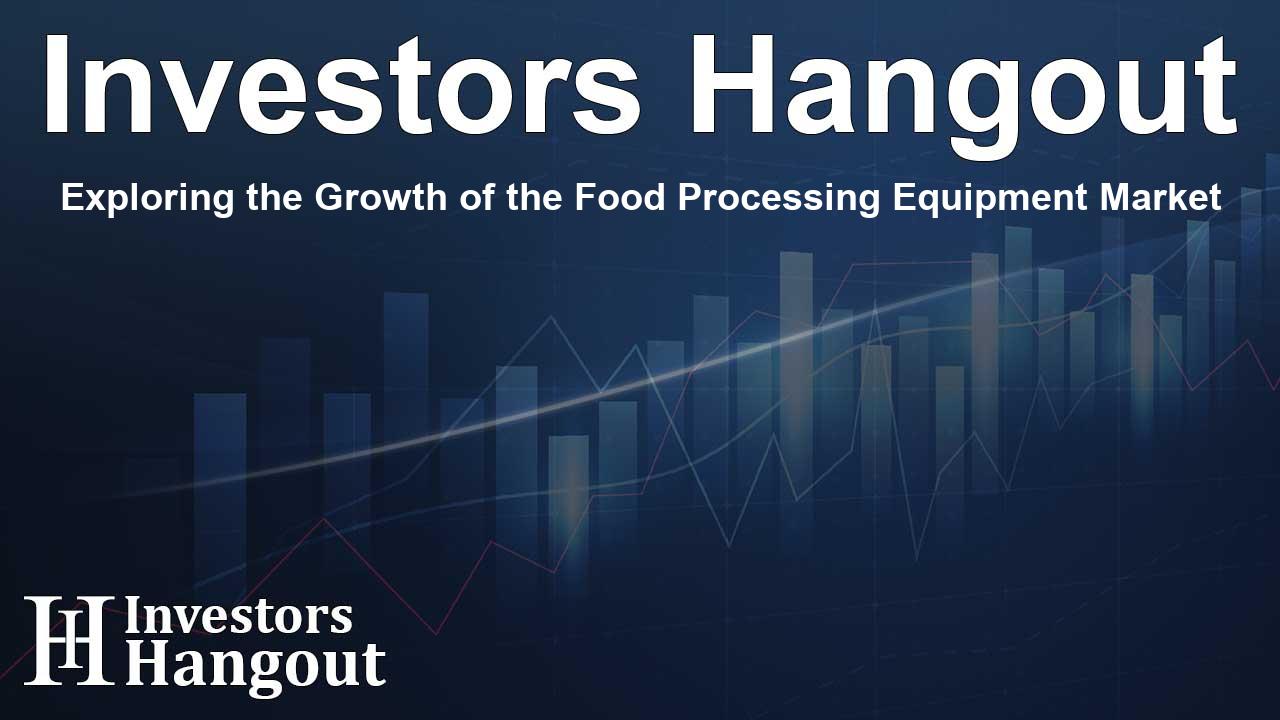Exploring the Growth of the Food Processing Equipment Market

Future Trends in the Food Processing Equipment Market
The food processing equipment market is experiencing significant growth, with projections indicating a revenue of USD 101.72 billion by 2031. This growth reflects an annual compound growth rate (CAGR) of 5.85% from 2024 to 2031. The increasing technological advancements and rising consumer demand for processed foods are driving this expansion, making it a pivotal area for industry stakeholders.
Understanding the Market Dynamics
As the global food industry evolves, the demand for innovative machinery continues to rise. Manufacturers are searching for equipment that enhances operational efficiency while ensuring food safety and compliance with regulatory standards. The information presented in market reports is tailored to help businesses make informed decisions regarding investments, purchases, and strategic planning.
Key Drivers Fuelling Market Growth
Several factors contribute to the rapid growth of the food processing equipment market. Technological advancements in automation and artificial intelligence are reshaping operational frameworks. These technologies increase efficiency and reduce operational costs while improving product quality, allowing businesses to meet customer expectations for both safety and convenience.
Consumer Behavior and Market Responses
The shift towards convenience foods is evident, reflecting a growing consumer preference for ready-to-eat options. As consumer demand increases, food manufacturers are investing in advanced processing technologies to keep pace with market trends. This investment promotes enhancements and improvements across processing equipment, further driving industry growth.
Regulatory Landscape Impacting Equipment Adoption
The food processing equipment market is also influenced by strict food safety regulations. Compliance with these regulations necessitates the adoption of advanced processing machinery designed for maintaining hygiene and quality. Therefore, many food manufacturers are compelled to invest in upgrading their equipment to adhere to these standards, propelling market expansion.
Challenges in the Current Market Environment
While the food processing equipment market shows great potential, it is not without challenges. The high initial capital investment needed for sophisticated equipment poses a barrier for many small and medium-sized enterprises. Additionally, the complexity of modern machinery can lead to substantial maintenance demands and operational challenges. Companies must weigh the comprehensive costs against the potential long-term benefits to determine their investment strategy.
Economic Influences on Market Trends
The economic landscape and market volatility can significantly impact investment decisions in the food processing equipment sector. During economic downturns, companies may opt to delay capital investment, affecting overall market growth. Companies must navigate these uncertain conditions thoughtfully while planning for future expansions.
Geographical Insights into Market Dominance
North America and Europe are currently leading the food processing equipment market due to their robust technological infrastructures and established processing sectors. Continuous investments in innovations and food safety compliance standards are vital components of this growth trajectory. Meanwhile, Asia Pacific is emerging as a crucial growth area, driven by increased urbanization and consumer demand for processed goods.
Competitive Landscape
Prominent companies in the food processing equipment landscape include Bühler Group, Tetra Laval Group, GEA Group, and Krones AG, among others. Their strategic decision-making and market strategies play a critical role in influencing the overall dynamics of the industry.
Market Segmentation and Insights
The report provides detailed segmentation of the food processing equipment market based on type, mode of operation, application, and geography. Different categories, including processing and pre-processing equipment, are pivotal in understanding the market structure and identifying growth opportunities.
Future Directions for Industry Participants
For businesses looking to gain a competitive edge, understanding market trends and consumer behaviors is vital. Catering to rising demands for convenience, sustainability, and food safety requires ongoing innovation within food processing equipment. This market presents extensive opportunities for those willing to adapt and invest in new technologies.
Frequently Asked Questions
What is the projected growth rate of the food processing equipment market?
The food processing equipment market is expected to grow at a CAGR of 5.85% from 2024 to 2031.
Which regions are leading in the food processing equipment market?
North America and Europe are currently leading the market, while Asia Pacific is rapidly emerging as a key growth region.
What are the main drivers of growth in this market?
Technological advancements, increased consumer demand for convenience foods, and stringent regulatory requirements are the main drivers.
What challenges do manufacturers face in this market?
High initial investments, maintenance complexities, and economic uncertainties pose significant challenges for manufacturers.
Who are the key players in the food processing equipment market?
Key players include Bühler Group, Tetra Laval Group, GEA Group, and Krones AG, among others.
About Investors Hangout
Investors Hangout is a leading online stock forum for financial discussion and learning, offering a wide range of free tools and resources. It draws in traders of all levels, who exchange market knowledge, investigate trading tactics, and keep an eye on industry developments in real time. Featuring financial articles, stock message boards, quotes, charts, company profiles, and live news updates. Through cooperative learning and a wealth of informational resources, it helps users from novices creating their first portfolios to experts honing their techniques. Join Investors Hangout today: https://investorshangout.com/
Disclaimer: The content of this article is solely for general informational purposes only; it does not represent legal, financial, or investment advice. Investors Hangout does not offer financial advice; the author is not a licensed financial advisor. Consult a qualified advisor before making any financial or investment decisions based on this article. The author's interpretation of publicly available data shapes the opinions presented here; as a result, they should not be taken as advice to purchase, sell, or hold any securities mentioned or any other investments. The author does not guarantee the accuracy, completeness, or timeliness of any material, providing it "as is." Information and market conditions may change; past performance is not indicative of future outcomes. If any of the material offered here is inaccurate, please contact us for corrections.